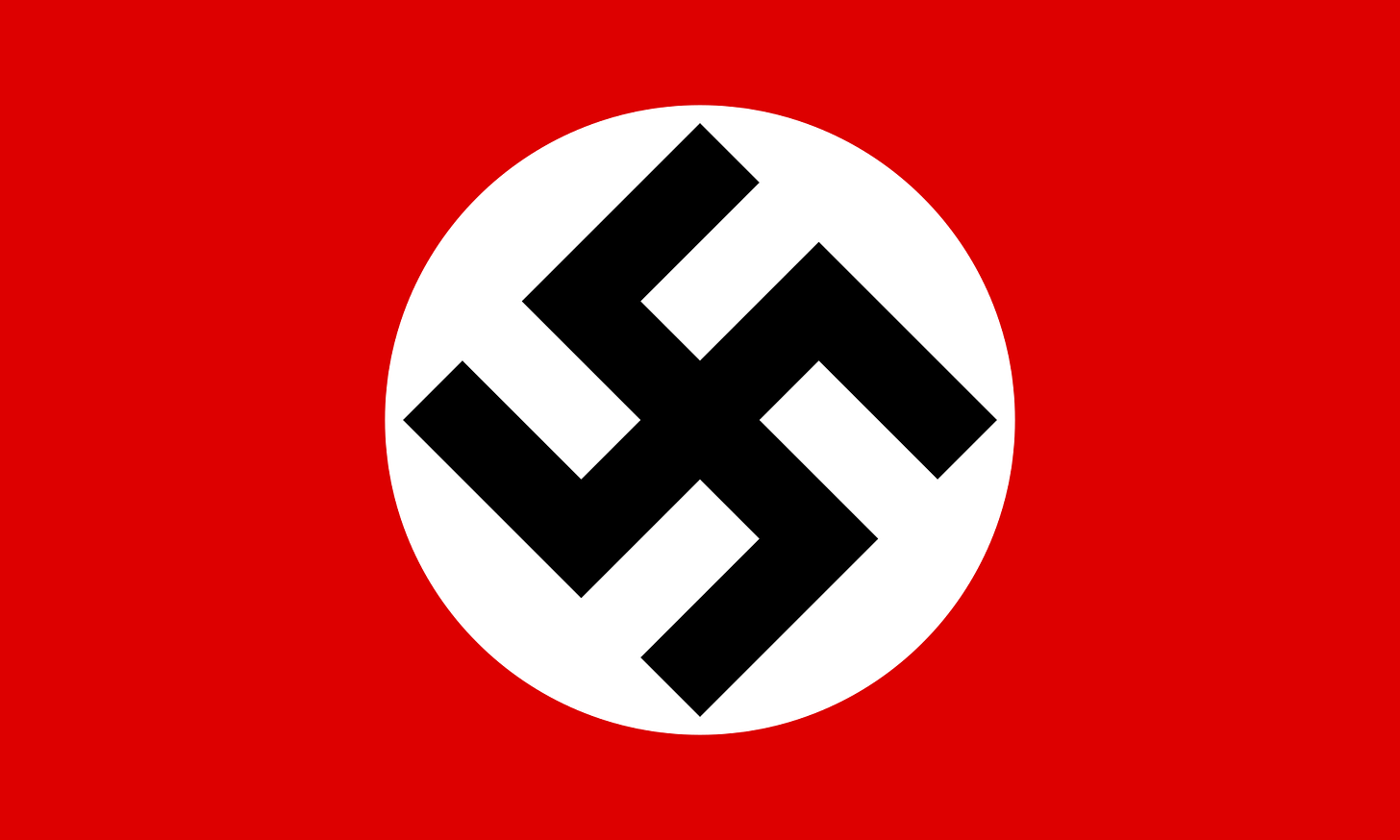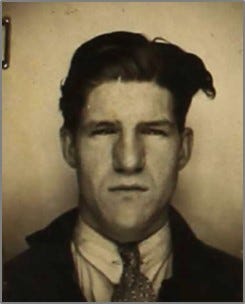How an American Protest Inspired the Nazi Flag
The flag of Nazi Germany became the flag of Nazi Germany thanks to an American protest that took place on this day in 1935.
Before that, the flag was used as the banner of the Nazi Party, and when Adolf Hitler was appointed chancellor of Germany in 1933, it was adopted as one of two national flags, the other being the black-white-red triband of the German Empire.
But the flag at the top is not the flag of Nazi Germany. It’s the flag of the Nazi Party, whereas the state flag featured an off-center Nazi cross.
Hitler, an avid flag designer himself who pored over the details of the party and state flags, wanted to keep the colors of the old German flag but with new significance. “Nazi” is short for Nationalsozialistische, or national socialist, and the new flag would include white for nationalism, red for socialism and black, oddly enough, for Aryans.
But it did not become the sole flag of Germany until the Bremen incident two years later in the summer of 1935, when six Irish-American longshoremen slipped aboard Germany’s finest ocean liner and the pride of the fleet, the SS Bremen, during a gala whose guests included the governor of Pennsylvania, Hollywood starlet Elissa Landi, and Catholic humanitarian Dorothy Day (currently being considered for sainthood).
The six men pretended to be drunken attendees who were saying goodbye to relatives before their voyage to Europe. When they were discovered, fighting broke out on deck and a New York Police Department officer shot one of the six men in the groin.
One member of the group, a 20-year-old named William “Bill” Bailey, who would later fight in the Spanish Civil War where he was known to be the biggest guy in his battalion and renowned for his bravery, fought his way to the bow of the ship, climbed the flagpole, ripped down the Nazi flag, and threw it into the filthy Hudson River.
There were gasps of horror from the gala guests and Bailey was arrested, taken away and beaten. He and his comrades were represented in court by U.S. congressman Vito Marcantonio, an Italian-American lawyer who served East Harlem and who was known as an advocate for the Italian, Puerto Rican and African-American communities there.
Marcantonio, the most left-wing member of Congress, was also a labor activist with extensive ties to the Communist Party and, according to one historian, “one of the greatest champions of black civil rights during the 1930s and 1940s.”
Bailey, a Communist Party organizer, was in good hands. In his courtroom argument, Marcantonio likened the Bremen Six to the colonial patriots at Boston Harbor who in 1773 tossed another famous symbol of tyranny into the water—tea.
But Bailey was in even better hands with the judge, a Jewish man named Louis Brodsky who had a reputation for looking past the letter of the law if it got in the way of a morally sound ruling. Brodsky dismissed almost all the charges and, in a remark reported around the world, said Bailey was entirely right to view the swastika as “the black flag of piracy.”
Hitler was outraged by the insolence of this Jewish American judge. Roosevelt swiftly apologized, and the United States pointed out that Bailey had technically only destroyed a political party flag rather than the German national flag.
Hitler responded by convening parliament, the Reichstag, on this day in 1935 in Nuremberg where he issued the infamous Nuremberg Laws, which made clear that Germany was Nazi Germany, Jews were enemies of the state, and the Nazi flag was the one official flag of the Fatherland.
To underscore his outrage over the Bremen incident, Hitler made sure the Reich Flag Law was enacted in the Hudson River aboard the very same SS Bremen.
So that’s how an American protester desecrated the Nazi flag, dealt the first American blow to Hitler and contributed to the Nazi flag becoming the banner of the Third Reich.
Hindu and Buddhist activists have sought to reclaim the term “swatsika,” noting that their symbol is distinct and that Hitler actually called the Nazi version of the symbol a hakenkreuz or ‘hooked cross.’ I tend to use hakenkreuz or “Nazi cross” myself, also because “swastika” comes from the Sanskrit svastika meaning ‘harmonious.’





I kinda feel like this story would make an excellent drunk history episode! I knew none of it.